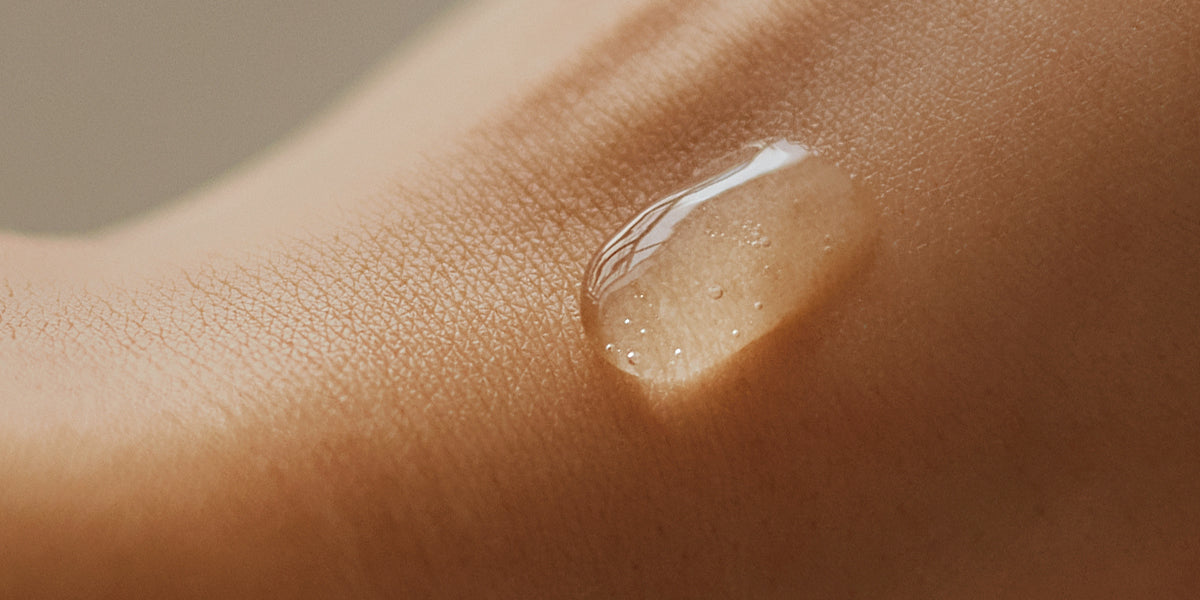Every day we Moisturize our skin, use various serums, creams and oils. We cream, cream, cream. But sometimes we mean it a little too well. Because too much of the wrong skincare can no longer be nourishing at all. This is precisely why perioral dermatitis can develop. Excessive use of certain skincare products can make the skin intolerant to certain ingredients and a promising product can quickly become the enemy of your own skin. Instead of well-moisturized skin, red, itchy and burning areas develop around the mouth. This is why the skin condition is also known as oral rosacea.
In this article you will learn...
-
What is perioral dermatitis?
-
What are the symptoms?
-
Excessive skin care as a trigger for perioral dermatitis - a "vicious circle"
-
Zero therapy for perioral dermatitis
-
Dos and donts for zero therapy
-
What skin care helps if the cause is over-care of the skin?
-
Nutrition for perioral dermatitis
1 What is perioral dermatitis?
Perioral dermatitis is a chronic inflammatory skin condition. As the name suggests, the condition occurs in the perioral area. In other words, around the mouth. Young women between the ages of 20 and 30 are most commonly affected. The fact that it mainly affects women also suggests a hormonal cause, although this has not yet been proven. Even though perioral dermatitis is a rather stubborn condition, it is not contagious. This does not mean that it is not stressful for those affected. This makes it all the more important for me to provide information about correct and, above all, supportive skin care.

2 What are the symptoms?
Classically, small inflammatory papules and pustules or pink scaly patches form around the mouth (perioral). However, the symptoms can also become more widespread and affect the eyelids, chin, forehead and cheeks. Due to the disruption of the skin barrier, the skin dries out and there is a burning sensation and a feeling of tightness. The areas can itch quite unpleasantly and it is not uncommon for the condition to worsen before menstruation. The skin condition is often confused with acne or rosacea, as the symptoms are very similar. Rosacea is characterized by fleeting and persistent facial redness, usually in the cheek and face area. There are also small vascular dilatations. Acne is typically manifested by so-called comedones - these are skin-colored papules, which can also have a small dark spot. There are also pustules, lumps and abscesses. In addition to the face, the shoulders, chest and back are particularly affected.
3. excessive skin care as a trigger for perioral dermatitis - a "vicious circle"
In addition to other possible but as yet unconfirmed causes, perioral dermatitis is usually due to over-care of the skin. The skin is then usually caught in a "vicious circle". It looks and usually feels dry and flaky. As a supposedly logical consequence, we use even more products - in the hope of doing something good for our skin! We believe that the solution can only be even richer skin care. A classic fallacy! Because this is where over-care of the skin comes into play. Our skin becomes dependent on the products and then reacts in exactly the opposite way. It becomes intolerant to certain ingredients. The high moisture content of the products causes the stratum corneum to swell and damages the skin barrier - a perfect breeding ground for further inflammatory processes.
So: Skin Moisturize is great, but it has to be the right skin care. Over-care can impair the protective skin barrier and trigger a bacterial infection, which in turn is associated with a shift in the pH value. This only makes bacteria feel all the more at home.
Perioral dermatitis can then run its course for months, with the severity worsening from day to day.
4. zero therapy against perioral dermatitis
As annoying as this skin disease is, it doesn't just have its downsides. It is not contagious and therefore does not spread like wildfire. It is not chronic and can usually be cured with consistent treatment. What do you need for this? Nothing, except a lot of patience.
Your skin reacts irritably to this
Erysipelas is not an allergy to individual substances, but a general hypersensitivity caused by using too many cosmetics. Most products today easily contain up to 30 ingredients. Added to this is a propagated complex care routine. This means that AM can easily add up to over 100 ingredients. A veritable sensory overload that simply overwhelms your skin. In the end, it resists everything and goes on strike.

What's good for your skin now - The comfort of nothingness
Everything is just too much for your skin right now and it wants nothing but peace and quiet. This is why the dermatologist usually prescribes so-called zero therapy. What's behind it? Quite simply: cosmetic abstinence. However, just like a relaxing beach vacation, recovery only sets in once all the stress is out of your system. At first, your skin will probably feel worse - a dermatitis jet lag, so to speak. Due to the lack of moisturizer it will start to tighten, flake and feel extremely dry. During this phase, the over-nourished and swollen horny layer dries out. This deprives harmful bacteria of any breeding ground and prepares the skin to heal. Depending on the severity, the aggravation can last around two weeks. This may be unpleasant, but perseverance pays off. As soon as the first symptoms subside, you can breathe a sigh of relief. Your skin will regenerate and will be completely recovered after around 6 weeks.
You are now welcome to start taking care of your skin again. But be careful and be very piano. You can find out what minimalist skin care looks like below.
5. dos and donts for zero therapy
Even if a cosmetic diet is no walk in the park, it is the only way to get your skin back into balance. The Dos & Don'ts will give you a little help so that you don't go down this path in vain and your patience pays off.

DO
Reduce your routine to a very mild minimum. Mild products, e.g. based on aloe vera, should be used here.
- Opt for a mild cleanser e.g. with our Cleansing Gel with mild plant-based surfactants and organic chamomile extract.



















